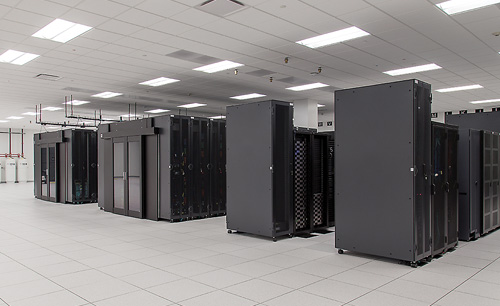How do data center operators design and build for a varying array of different users and insure they are deploying the right product type to maximize their success? In short, we have found success in solving data center design and build challenges by utilizing the following simple parameters:
Keys to success:
- Capacity — Maintain ample availability of land, space, and power to balance supply and demand.
- Establish key performance indicators (KPIs) — Never lose sight of KPIs such as health and safety, efficiency, or quality metrics.
- Speed to market — Partner with a loyal and dependable supply chain to easily meet timing and delivery expectations.
- Stay ahead of market needs — Keep construction-ready sites available for immediate build-to-suit or modification, so customer operators do not have to start their data center projects from scratch.
- Listen and respond to every customer’s specific concerns so as to furnish the right product at the right time, and ensure alignment across all design and construction channels.
What enterprise users expect:
Fortune 1000 companies and many more are looking for master-planned risk-averse sites — outside of flight paths, away from rail lines and industrial uses, and outside the FEMA 500-year flood plain. Most are also looking for a higher level of site and building security and independent infrastructure — all located in a hardened purpose-built facility — deploying a multilevel security protocol that starts with a secured site entrance, and continues throughout the building with increasing security stop-gaps, all the way to the cage level.
Today, traditional enterprise users prefer a handful of specific fiber providers that are led by their corporate WAN provider — which can be delivered by the carriers utilizing a minimal footprint inside the data center. We are starting to see a trend of these users increasing their bandwidth and expanding to other solutions such as dark fiber and interconnection to control costs.
Fortune 1000 companies and many more are looking for master-planned risk-averse sites — outside of flight paths, away from rail lines and industrial uses, and outside the FEMA 500-year flood plain. The enterprise user’s footprint is typically less dense, deploying less power throughout their data center, resulting in a lower kilowatts-per-cabinet ratio (typically ~ 4kW). They also often require diversity in their utility power feeds from either two separate transformers within the same substation or, preferably, two separate substations with diverse transmission feeds.
Enterprise customers typically have a moderate line of sight into their long-term deployment strategy, as their needs are tied to specific business requirements. Enterprise users generally scale into these deployments at a slower rate than cloud providers. The solution is to deploy a product that is scalable over a long period of time in order to meet the challenges of today and tomorrow.
What hyperscale cloud providers need:
Unprecedented growth and scalability needs are outpacing what typical cloud providers can produce in their existing data centers. Hyperscale data center requirements of cloud providers are an output of the volume at which their businesses are exploding.
Hyperscale cloud customers are usually more risk-tolerant as they have built-in redundancy through their multi-data center locations. Proximity to abundant power is critical for them, and it often drives site selection. They are also more open to new technologies and leading-edge design options for speed to market and to lower initial capital and future operating costs. For instance, many utilize containerized, or modular, designs for their electrical and mechanical systems versus the conventional stick-built design. In contrast, the enterprise user may associate the containerized approach with unacceptable risk exposure.
Hyperscale cloud users may have little to no need for multiple network service providers in their building, as they are tying back to interconnection stations through their own fiber, or dark fiber from a few service providers, back to key carrier hotels. If a cloud service provider, however, is taking lit services into the building, their demand for space and power for the network service provider could be very large — beyond what even the enterprise user may require.
Unprecedented growth and scalability needs are outpacing what typical cloud providers can produce in their existing data centers. Cloud providers require larger-scale deployments and specific timelines, fast-tracked to meet immediate business expansion needs. Cloud users typically deploy their required power capacity immediately in a much denser environment than the enterprise users (typically ~ 10kW per cabinet), but consistent with enterprise users, they want scalability options. So, the challenges in building hyperscale cloud centers are speed and scale done right — all to support flexibility of an ever-changing IT roadmap.
It’s clear how the two examples discussed here present different design and build challenges, but meeting such variable challenges simply requires a singular focus — the customer’s specific business needs. We know from experience, building credibility and trust between developers and customers is required when deploying mission-critical facilities, and we believe the best way to proceed in the design and construction process is to first listen, and constantly adjust to the customer and market needs.
Chris Kincaid oversees the design and construction of Stream Data Centers’ product portfolio of Hyperscale Cloud Centers, Private Data CenterTM facilities, and Ready-to-FitTM powered shells. Kincaid has more than 20 years’ experience in project management services, with 14 of those years being focused on mission-critical data center construction and commissioning.
Since 1999, Stream has been an active investor and industry leader, providing premium services, optimized value, and scalable critical environments to the Fortune 500 and beyond. To date, the company has acquired, developed, and operated more than two million square feet of data center space in Texas, Minnesota, California, and Colorado, representing more than 200 megawatts of power.
